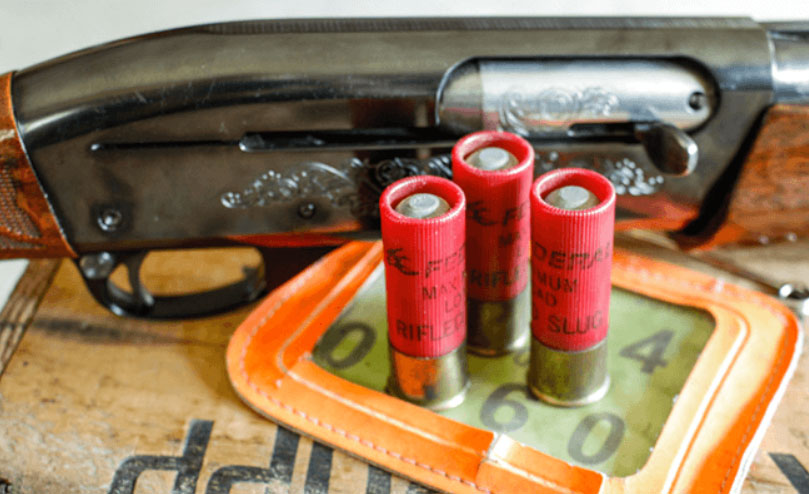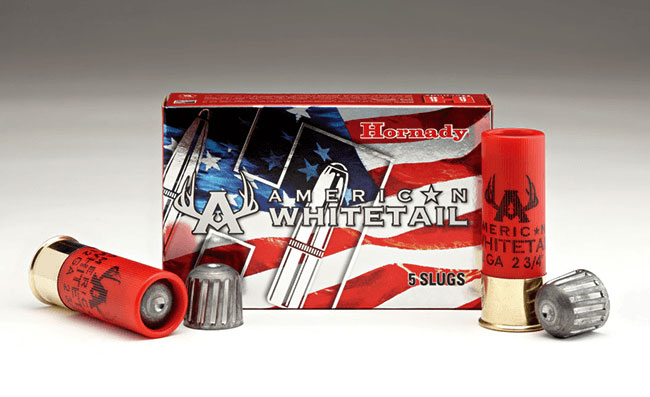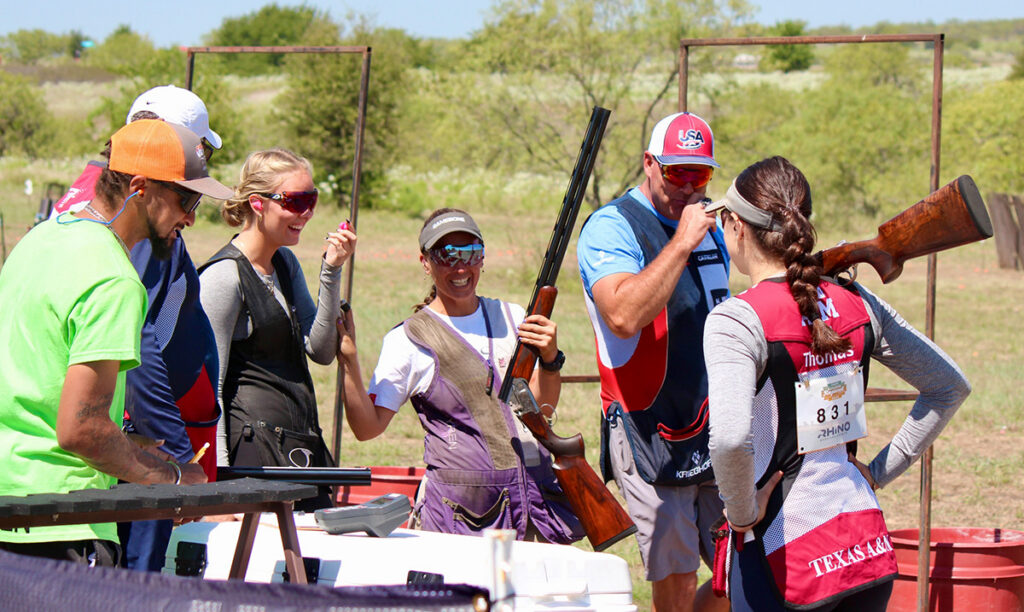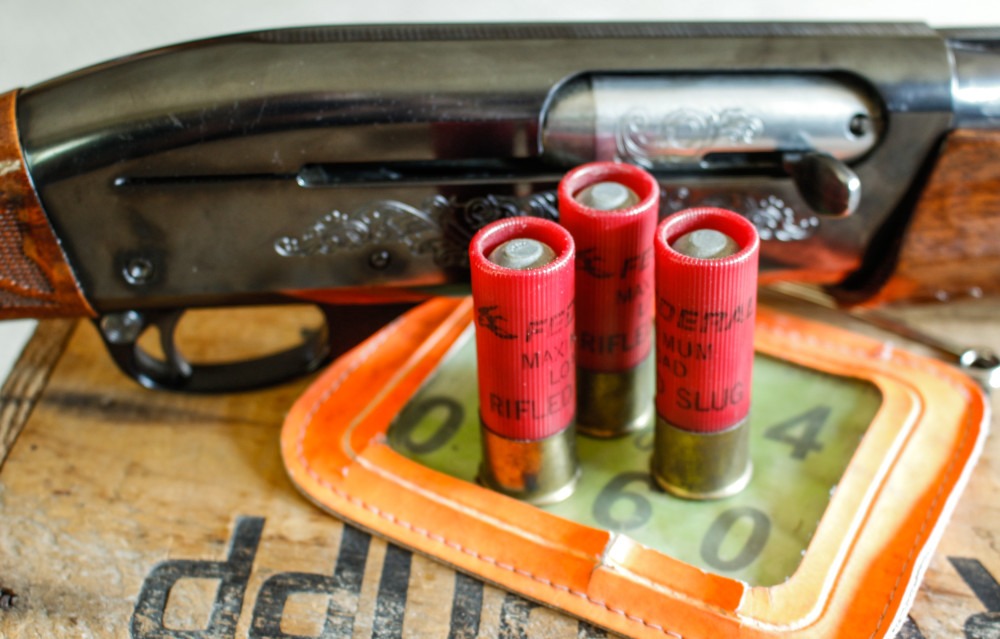
The shotgun is a very versatile firearm, capable of filling many roles. From breaking clay birds to calling in spring turkeys, the camaraderie of the duck blind and even in the role of home-defense, the shotgun has wide applications.
We’ve talked about how shotshells are constructed in the past. Most of the time, they hold a load of pellets — called “shot” — good for hitting clay birds and hunting things like pheasants and ducks. However, when it comes to hunting big game, the traditional payload of many small pellets won’t get the job done. The penetration of the small pellets isn’t enough to cleanly and quickly kill deer, bear and other game animals. Now, you might have heard of something called “buckshot.” These are shot pellets of very large size; a shotshell of buckshot may have just a few pellets, whereas a shotshell for clay target shooting would have many dozens. But let’s hold a discussion of buckshot for another month and concentrate on the other specialty shotgun ammunition, the slug shell.
In populated areas, as well as in some states where the topography is relatively flat, hunting regulations often prohibit the use of rifles. In their stead, hunters are usually permitted (or even required) to use shotguns that fire slugs, which don’t travel as far as common centerfire rifle calibers and don’t travel as fast over the range they are capable of (which is much less than a centerfire rifle bullet).
In this video, Top Shot Champion Chris Cheng demonstrates the differences between several common shotgun loads. Firearms instructors and experienced shooters are encouraged to watch and share these tips with newcomers to the shooting sports.
Early Slugs — Nothing to Rave About
So what is a slug? Well, just like the bullet on a centerfire or rimfire rifle cartridge, a slug is a solid projectile, but instead of being loaded in a brass case, it’s loaded in the same general type of plastic shotshell case as the shells you use for shooting skeet or trap. The earliest shotgun slugs were simple, round lead balls, slightly smaller than the barrel diameter, so as to pass freely down the bore. They were known as “pumpkin balls” or “pumpkin slugs,” and while effective, they weren’t known for their accuracy. Why? Remember that the bores of shotguns back then (and most now) are smooth on the inside. Rifles and handguns, on the other hand, have grooves and ridges in them called “rifling,” which helps to spin and stabilize their bullets as they’re fired. Because those shotgun bores were smooth, a slug fired down them didn’t spin and didn’t stabilize in flight once it left the barrel. Really, a slug fired through a gun back then behaved much like a lead knuckleball.
Brenneke’s Invention
In the late 1890s, a German ammunition maker named Wilhelm Brenneke devised a shotgun slug that would perform much better than the pumpkin balls. His design used a projectile formed to have its weight forward (to resist tumbling in flight) while also employing small ribs on the slug’s outside. These raised ribs helped to reduce friction as the slug traveled down a shotgun’s barrel. Brenneke also added a felt wad inside the shotshell, putting it at the rear of the slug. This helped to seal the gases produced when the slug was fired and released from its case to travel down the barrel, which helped to improve velocities. The results: Delivering plenty of frontal diameter that produced a larger wound channel on big game, the Brenneke slug was an instant success. It remains in use to this day and is the shotgun slug standard across Europe.
Foster’s Follow-up
In the 1930s, an American named Karl Foster created his own unique shotgun slug, one with a deep, recessed cavity at the rear. As it was with Brenneke’s design, this keeps the weight of the slug forward and results in a more stable flight pattern from a smoothbore shotgun. The Foster slug is also a popular choice to this day and is referred to as the “American slug” to contrast it with the European Brenneke design.
Modern Improvements
To put some spin on the slug, which improves their accuracy when shot in a smoothbore shotgun, some slugs today have rifling added to them. A great example is the Federal Tru-Ball slug, which is a rifled Foster-style slug that has a plastic ball in the slug’s rear cavity that better centers the slug within the barrel as it travels down and out. In fact, the accuracy results from slugs like these are light years ahead of the standard Foster slug.
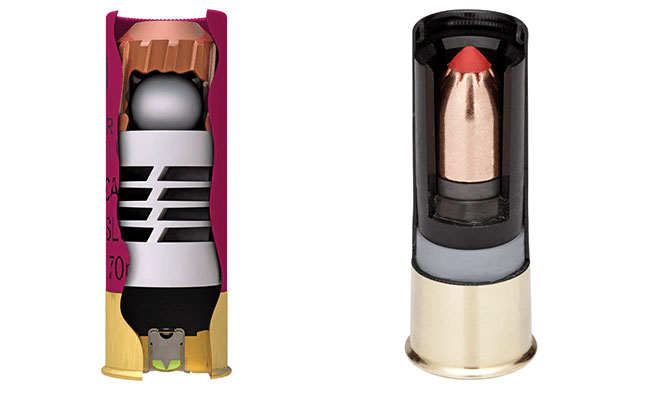
From left to right: The components of a Federal Tru-Ball slug shell and the slug itself. Hornady MonoFlex slug.
Shotguns that are made specifically to shoot slugs are also now produced, and just like rifles and handguns, they have rifled barrels. The company known as Hastings produced one of the first rifled barrels for shotguns, and both the accuracy and range of a slug gun wearing one of these barrels made it possible to take effective shots on game at ranges out past 100 yards. The concept caught on quickly, and now many firearms manufacturers offer rifled-barrel shotguns designed specifically for big-game hunting. Some even offer these guns with two barrels, one smooth and one rifled, to provide a very flexible gun to buyers. Such second barrels included in these packages are meant to be used with what’s called a “saboted” slug. With a saboted slug, the projectile is held within a plastic cup — the sabot — which “takes” the rifling as the slug and sabot travel down the barrel. This, of course, helps spin and stabilize the slug.
The development of saboted slugs in recent decades has resulted in shotguns that exhibit rifle-like accuracy. Some practiced hunters use them out to 200 yards with great effectiveness. As accuracy improved through the use of saboted slugs, so, too, did the quality of the slugs themselves. Today’s saboted slugs are usually copper-jacketed and they often have a “spritzer” design (they’re pointed) that, just like a rifle bullet’s design, reduces air drag and flattens the trajectory of the slug once it leaves the barrel.
Other Uses for Slugs
While slugs are predominantly used for hunting, that’s not their only purpose. Today’s 3-Gun competition calls for the use of shotgun slugs on many different targets, so for those of you who enjoy this shooting game, an accurate slug is important for you. The same can be said for using a shotgun slug in a home-defense situation.
Whether you choose to hunt with slugs, compete in a shooting sport that requires them or decide that a slug shotgun is a home-defense tool that works well for your home, spend some time with several different brands and types of slugs in your shotgun and discover which works best for your hunting or shooting situation. You would do this with handgun and rifle ammunition, and the reasons for doing so there are just as valid here. Plus, the more you practice and familiarize yourself with the firearms you own, no matter what they are, the better and safer marksman you’ll be. Learn more about the shotgun sports here.


